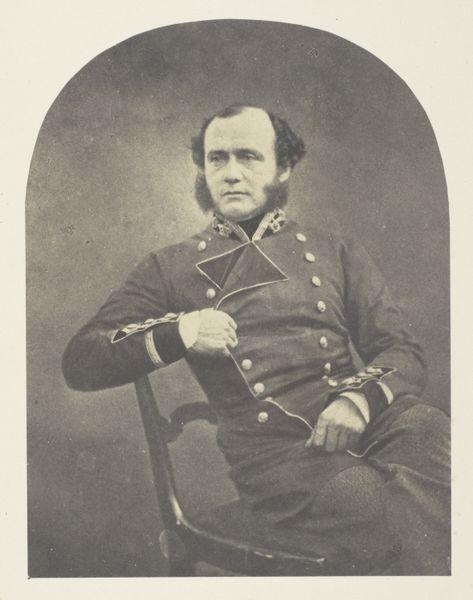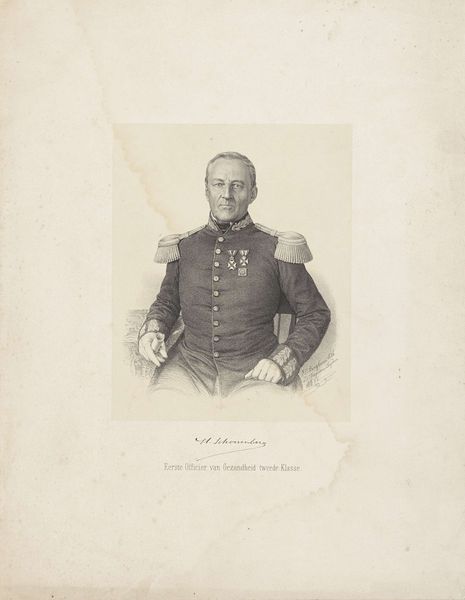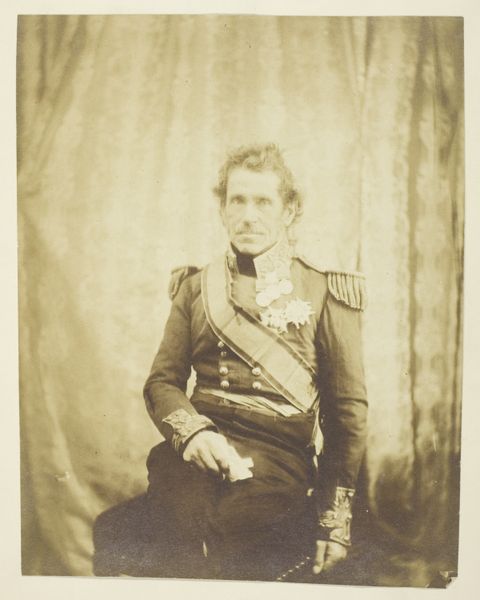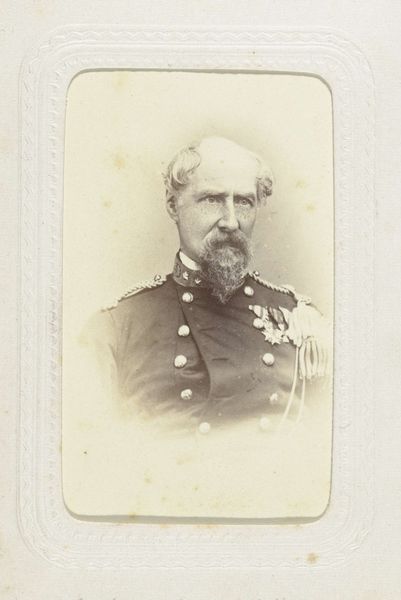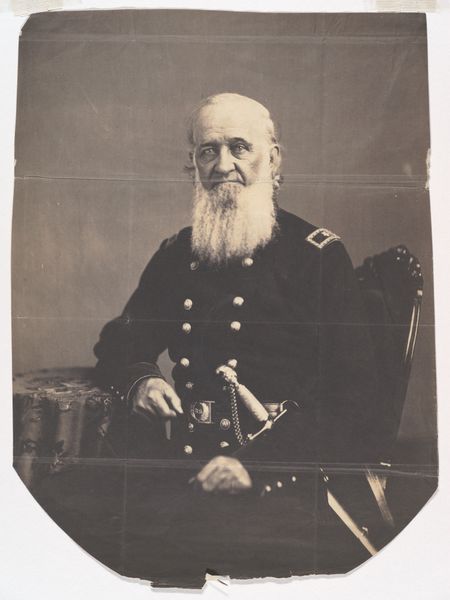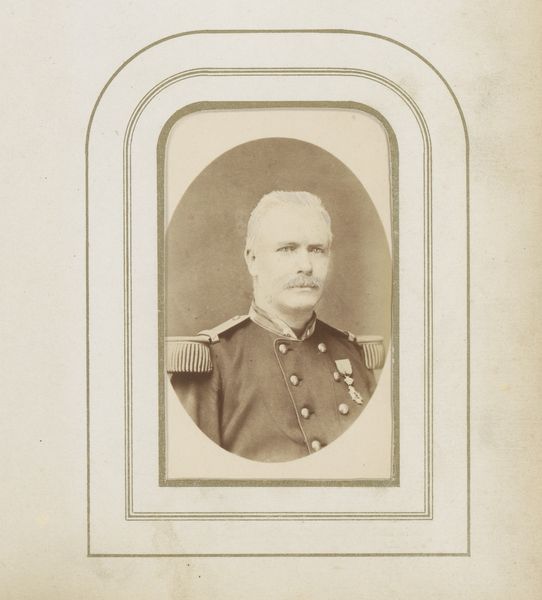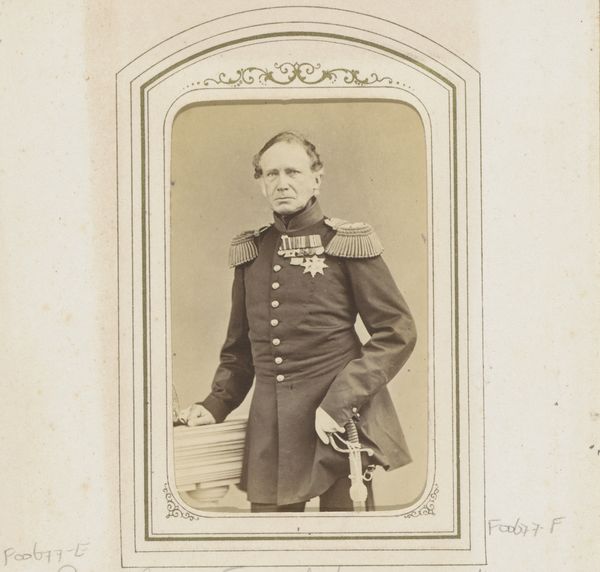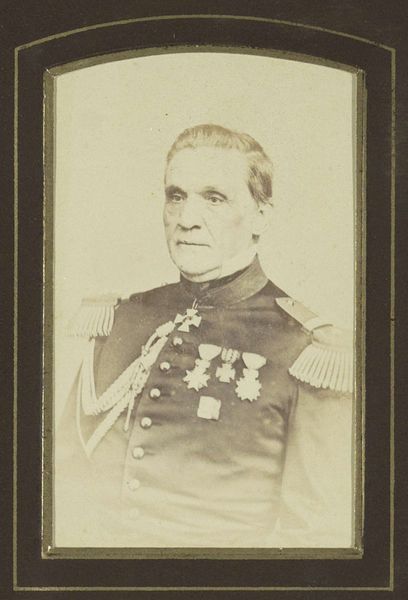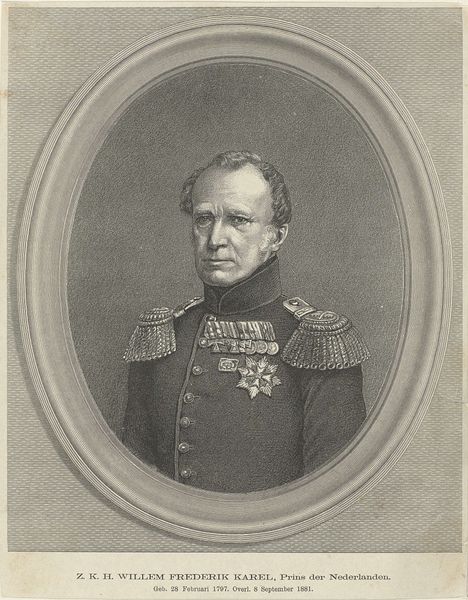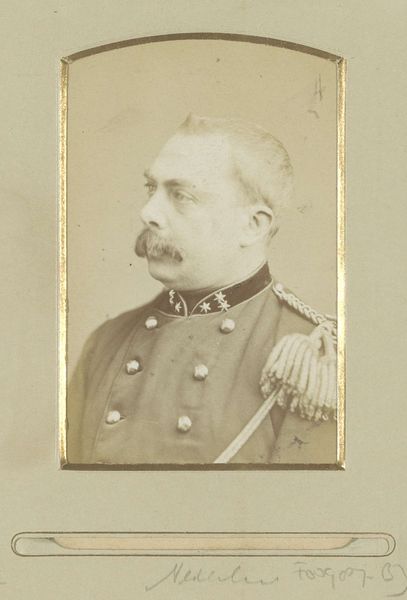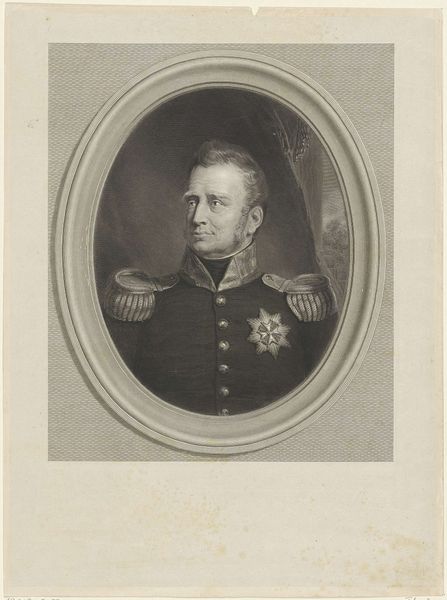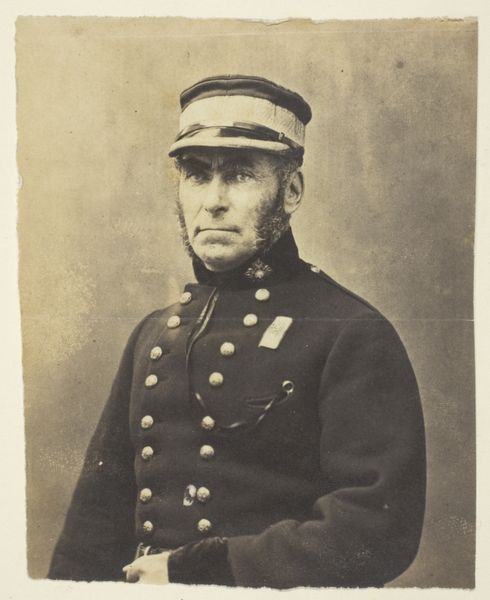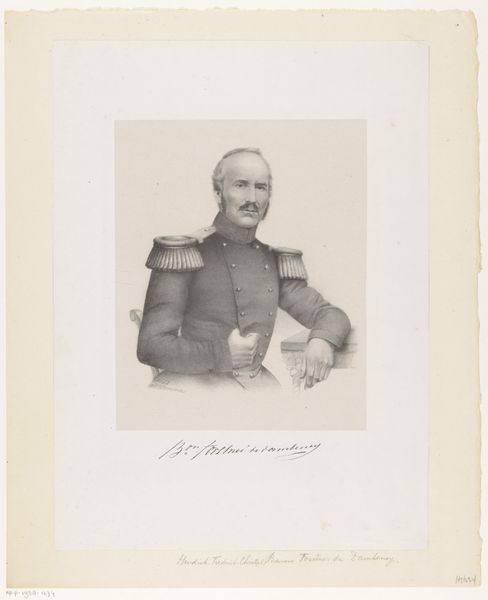
photography, gelatin-silver-print
#
portrait
#
photography
#
historical photography
#
gelatin-silver-print
#
19th century
#
men
#
history-painting
Dimensions: Image: 22.5 × 14.9 cm (8 7/8 × 5 7/8 in.)
Copyright: Public Domain
Curator: This is a portrait of Major General David E. Twiggs, created between 1857 and 1861 by Mathew Brady. The photograph, rendered in gelatin silver print, captures the General in striking detail, now housed at the Metropolitan Museum of Art. Editor: He certainly projects authority. The direct gaze, the meticulous uniform, even the slightly furrowed brow all seem deliberately constructed to convey a sense of gravitas. It also evokes the harsh realities of that period. Curator: The photograph possesses an iconographic quality, especially the uniform; consider its symbolic weight. The epaulettes and the belt buckle serve as potent symbols of military rank and authority, acting almost like talismans. They visually communicate the General’s position within the hierarchical structure of the military and, by extension, society itself. Editor: It's fascinating to situate Twiggs in the rapidly shifting landscape of mid-19th century America. Just as this photograph was being made, the nation was inching closer to the Civil War. Twiggs infamously surrendered U.S. government property to Confederate forces early in the conflict, an action that paints a much more complex picture of the man beyond this stern image. Curator: Precisely. This image invites us to look beneath the surface, into the duality that often exists between a carefully constructed public image and the internal conflicts or societal pressures one faces. Think of the scroll in his hand. It’s ambiguous, could it stand for leadership and law but maybe also suggests orders and duty? Editor: It raises a question about the power of image-making. How much does this photo contribute to a sanitized or romanticized version of history, and whose perspectives are left out in the process? Brady's studio often catered to elites, shaping visual narratives that need constant critical re-evaluation. Curator: By considering the layered meanings within the image, we realize portraits aren't simply about appearances; they function as cultural artifacts. They perpetuate the symbolic weight we give to figures over time. Editor: Absolutely. And recognizing the selective framing allows us to critically engage with the complicated legacies that men like Twiggs represent, as well as question whose stories are elevated and how that impacts collective memory. Curator: Ultimately, this portrait acts as a visual portal. It offers both a glimpse into a particular historical figure and a challenge to engage with the more complex, even unsettling narratives embedded within. Editor: A challenge, indeed. One that prompts us to confront uncomfortable truths and to recognize the ongoing need for diverse voices and perspectives in shaping how we understand the past.
Comments
No comments
Be the first to comment and join the conversation on the ultimate creative platform.
